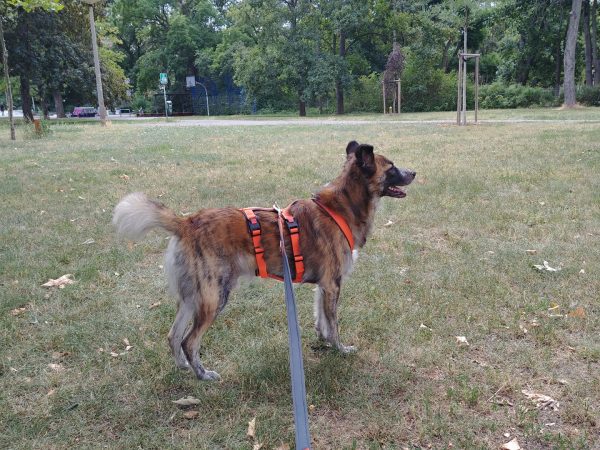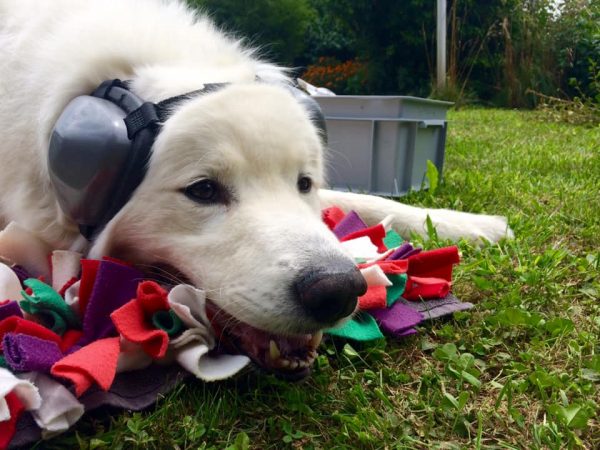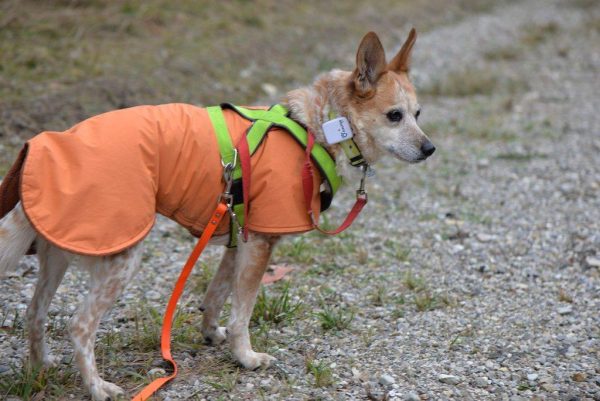Many dogs suffer from firework and storm phobias. Both storms and fireworks are pretty unpredictable, which makes training tricky. Dogs will sometimes do crazy things out of fear: from hiding in the bathroom, through peeing themselves, to running away – and 40-50% of those who did run away never make it back! So our first priority is reducing the amount of fear they experience.
Bear in mind that each dog is different, not all of them can be cured and not all of us have what it takes to go through a rigorous counter-conditioning program. It is vital that we are honest about what we can achieve at the given time and just strive for the best possible scenario.
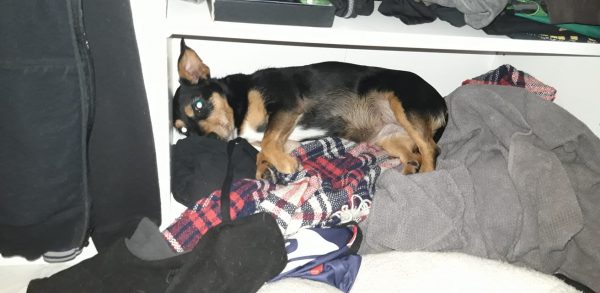
1. Assess your dog
You need to recognize how stressed your dog is in the given situation1. It will determine how much work there is for you. This is a list of common signs of stress starting with the milder, more ubiquitous symptoms.
-
- panting
- pacing
- yawning
- drooling
- licking (especially paws)
- vocalizing (whining/barking)
- attention seeking
- shedding
- hiding
- shaking
- urinating (this one can go both ways – the dog can urinate out of fear or they may be so stressed that they’re incapable of elimination)
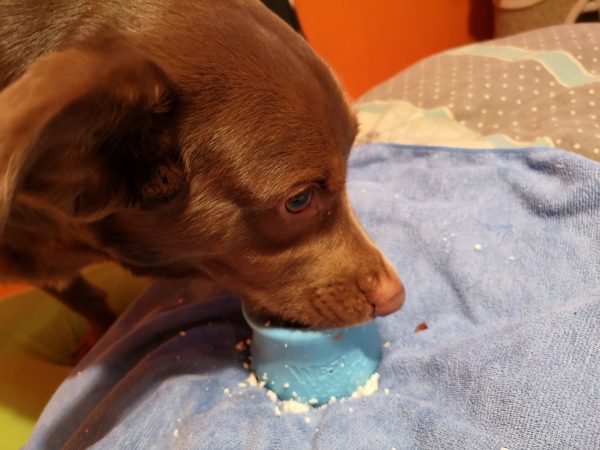
2. Ahead of time: decrease the overall stress level
Stress is not a one-off event, it accumulates over time. That means that even if you can’t quickly cure your dog of firework phobia, they will have an easier recovery if they’re overall doing well.
If you know that fireworks will happen or that a storm is approaching you can:
Avoid doing anything that makes your dog scared or uncomfortable (car rides, restaurant visits, the vet…) but also limit high-adrenaline activities such as playing ball. It might also be wise to skip your agility class for a while. Instead go for calm walks in places where you don’t have to control your dog all the time, offer them lots of opportunities to sniff, gentle massages, take them for a swim… you know best what makes your dog go all soft and chill.
Other options include:
- prescription medication – consult your veterinarian on whether this is an option for you
- a pheromone collar
- a thunder shirt
- anxiety relieving food supplements
3. During the event: manage the situation as best you can
- walk your dog before the fireworks begin
- secure your dog either with a safety harness or with a combination of a harness and a collar
- use a GPS tracker if you have one
- if your dog has a favourite hiding spot, you can make it extra cozy for them
- turn on music or house appliances during the fireworks – the noise from outside will be less distinct then
- provide comfort if your dog asks for it
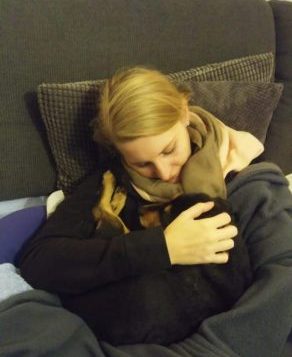
4. Long-term solutions: relaxation training and classic counter-conditioning
According to the study conducted by the research center HundeUni Bern the two most effective methods are relaxation training and counter-conditioning.
Relaxation training can include:
- teaching them to associate a specific piece of rug or music with relaxation
- introducing a conditioned relaxation cue – your dog learns to relax on cue
- rewarding them each time they choose to settle down on their own
The usual method used in dealing with fears is classic counter-conditioning (CCC). Let me quote Jean Donaldson, one of the pioneers of modern day training methods: Counterconditioning is about changing associations. It’s called counterconditioning because the dog already has an unpleasant emotional response [CER] to the thing we’re trying to condition. So we counter that by establishing a pleasant CER2.
For example: your dog hates the vacuum cleaner. Your aim could be to have your dog calmly leave the room when you take out the vacuum cleaner instead of barking at it wildly.
- Start with either a recording of the vacuum cleaner or someone can start vacuuming at the other end of the flat3. Your dog decides what is too much.
- Pair it with something your dog loves: feed them something delicious, play their favourite game or give them a gentle massage. Your dog should not show signs of stress!
- You gradually increase the intensity of the stimulus until your dog starts liking the vacuum cleaner or at least stops being freaked out by it.
- Once they’re not freaked out anymore, you can start working on an alternative behavior, for example resting in another room.
Counter-conditioning might seem easy but it is actually really difficult to plan and execute properly. If you want to help your dog, I’d strongly advise you to work with a competent trainer!
